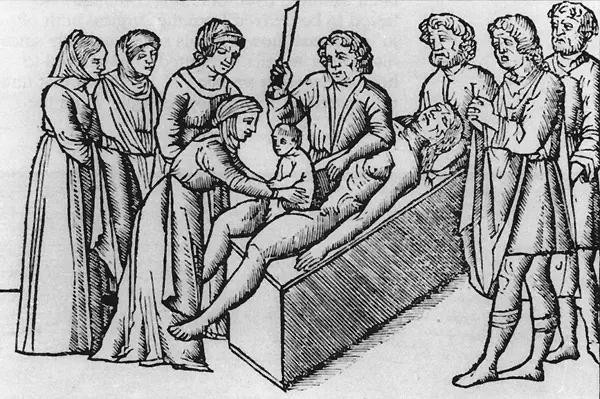The chainsaw, a tool synonymous with logging and forestry, has a surprising and somewhat unsettling origin story. While today it’s used to fell trees, the chainsaw was initially invented for a much different purpose: childbirth. Specifically, it was designed to assist in a surgical procedure known as a symphysiotomy.
The Challenges of Childbirth Before Modern Medicine
Before the advent of modern medical techniques and sanitation, childbirth was a perilous experience for both mother and child. While cesarean sections were documented as early as the 1500s, their success rate was extremely low due to the lack of proper surgical techniques and antiseptic practices. One early documented C-section, performed in the 1500s by a Swiss cow-castrator on his wife, is shrouded in doubt due to the improbable longevity of both mother and child following the procedure.
 Early C-Section Depiction
Early C-Section Depiction
Even in the 1800s, C-sections remained incredibly risky. Dr. John L. Richmond’s 1830 account of performing a C-section in a log cabin with minimal tools and under challenging conditions highlights the dangers involved. He described using a crooked pair of scissors and his finger to perform the operation, emphasizing the primitive state of surgical practice at the time.
The Symphysiotomy and the Need for a Better Tool
Because of the high mortality rate associated with C-sections, a less invasive procedure called a symphysiotomy was often preferred. This procedure involved severing the cartilage of the pubic symphysis to widen the birth canal, potentially allowing for a safer delivery. However, symphysiotomies still required precision and speed, which were difficult to achieve with the tools available at the time.
The Birth of the Chainsaw
In the late 18th century, two Scottish doctors, John Aitken and James Jeffray, revolutionized the symphysiotomy by inventing a prototype of the chainsaw. This early chainsaw was a far cry from the powerful, gas-powered tools we know today. It consisted of a small chain with teeth, similar to a watch chain, powered by a hand crank.
This hand-cranked chainsaw allowed surgeons to perform symphysiotomies more quickly and precisely than previous methods. While it may be difficult to imagine, this tool was considered a significant advancement in obstetrics at the time.
From Childbirth to Timber: The Evolution of the Chainsaw
The success of the chainsaw in symphysiotomies led to its eventual mechanization in the 19th century. However, the introduction of the Gigli twisted wire saw, a more effective tool for cutting bone, soon replaced the chainsaw in obstetrics. This paved the way for the chainsaw’s adoption by the timber industry in the early 20th century, where its power and efficiency made it an invaluable tool for logging.
Conclusion: A Legacy of Innovation
The chainsaw’s journey from the operating room to the forest is a testament to human ingenuity and the evolution of technology. While its origins in childbirth may be surprising, they underscore the constant drive to improve medical practices and develop tools to address challenging situations. The next time you see a chainsaw, remember its unexpected beginnings and the significant role it once played in the history of medicine.
